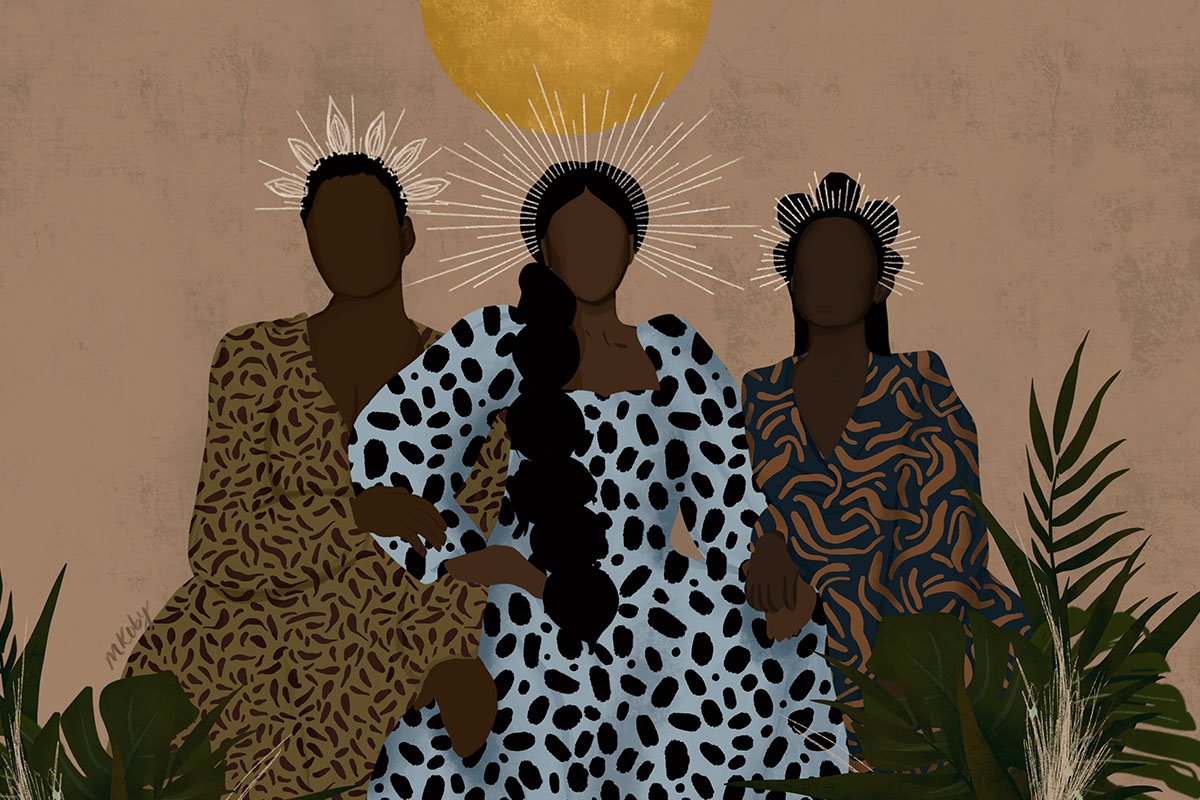
Can the university be a space where we realize racial and economic justice? At a recent event on race and labor in higher education, Rutgers University professor Naomi R. Williams said that it’s complicated. “Institutions of higher education are a part of the United States. They are institutions that have been, from their inception, embedded with racism—particularly anti-Black racism. So, we can’t expect these institutions to do something different,” she explained. “They are a part of larger society, and we have to do the work to dismantle the racism inside our institutions. And until that happens, then we can’t win, and we won’t win.”
This sharp analysis was only one small part of a rich and sweeping conversation on racially inclusive economic justice in the university, featuring labor historians Naomi R. Williams (Rutgers) and Robin D.G. Kelley (UCLA). Williams and Kelley, both professors at public universities, are academic experts within the field of labor history and are also active organizers. Their writings have in common a special attention to the effects of deindustrialization on the labor movement since the 1970s, and the place of the Black working-class within this history.
The event, hosted by Swarthmore College’s Aydelotte Foundation, was the latest in a longer series, “Race, Racism, and the Liberal Arts,” which examines the relationship between the university and insurgent forms of knowledge, identity, and politics practiced by Black people, Indigenous people, and people of color. What follows is a narrative report of the conversation, which I co-moderated alongside scholar Dennis Hogan.
Defeat, Not Decline
There’s a familiar story about the labor movement in the United States, and it goes like this: In the 1970s, the effects of deindustrialization hit unions where it hurt, leading to a national decline in the number of unionized workers. But this story doesn’t really grasp the uneven and complex assault on labor from multiple directions—nor does it account for the massive strike wave of the era and the ebbs and flows of organizing activity in the five decades since.
Robin Kelley was quick to make this argument at the outset of the event:
We often tell the story of organized labor in the 1960s and 1970s as hard hats and conservatives. But this is a period of the revolutionary union movement in Detroit, left-wing industrial concentration movements, militant unions in the public sector—and also working-class rebellions that may not take the form of unions, but are rebellions—in cities like Detroit, Los Angeles, Washington DC, and elsewhere. This is also a decade when full employment legislation is passed. It may not have a lot of teeth to it, but we forget that sometimes. So, this is a moment of labor’s strength, and it’s precisely that strength that commenced the sort of neoliberal shift, which takes advantage of the global economic crisis, towards a virulent anti-union politics, and uses the state and policy to make the world more market-friendly and wage war on labor. So, labor does not decline—it’s defeated, in a fight.
Militancy was in the air in the 1970s, and that carried forth for decades, even transforming the highest national institutions of labor. Kelley mentioned the movement’s “comeback moment” in the mid 1990s, referring to the AFL-CIO leadership election in which John Sweeney, Richard Trumka, and Linda Chavez Thompson ran on a bold platform to reform the federation and re-energize the labor movement, in part by promising to organize Black workers, Latinx workers, and more. After this, however, work became restructured even more dramatically along neoliberal lines. As Kelley clarified, “it’s not just outsourcing and capital flight, but lean production, flexible labor, precarious labor” in every major sector of the economy. Capital, in his words, “leverages the state,” pushing wages down and making up the shortfall through the welfare state, debt, and the prison-industrial complex.
Kelley’s correction about labor’s strength is an important one, Williams agreed, because only talking about labor’s decline erases the radical efforts of those who fought hard on the margins of the official labor movement. It also reinforces the narrative that the movement is dead—a narrative that the ruling class is all too thrilled to repeat. “Part of my work is writing against the notion of labor’s decline. Because it’s not a decline, it is a defeat, and the way we tell stories matters. If we’re not crafting a narrative that highlights this, then unions become less relevant. And then people stop paying attention to what unions are doing, and we lose even more power.”
There is cultural power in telling a more complex story of the labor movement because it allows us to learn from working-class people who are engaged in real political struggle. “Looking particularly at Black workers, and the role of Black workers in the labor movement, so often it’s a story of fights to get in,” Williams said. Focusing on the exclusion of Black workers from unions is much less useful than acknowledging that Black workers have historically been the most willing to join unions and fight for freedom for their coworkers and communities. “Highlighting these stories reshapes our understanding of deindustrialization. Black workers were leading the charge—and saying, ‘we have to protect against what’s happening.’” When faced with large-scale industry shifts like automation, Black workers who experienced the physical toll of speeding up the production process pushed their unions to resist it. “If we don’t highlight these stories, then we do get a narrative of decline. And I think that’s problematic; it shuts down opportunities to ask: how do we engage with labor? How do we make labor anti-racist? And why do we need to make labor anti-racist? Because if we do that then we win—and then everybody wins.”
Understanding this more nuanced history is also a crucial step in grasping the revolutionary potential emergent in new strategic sectors, such as healthcare, K-12 and higher education, food service, and logistics, all of which continue to be restructured by the relentless pressure of private equity. Today, Kelley noted, healthcare is an especially relevant example of the social crisis produced by the private sector: “the fact is that these private equity companies buy up these institutions, slash operating costs, and then turn them over like a house and sell them for profit.” The built-in casualty of monetizing healthcare is the livelihood of a gendered and racialized working-class “whose job it is to care.”
Williams elaborated that forces of privatization often work to undermine unions, pushing militant workers out of unionized jobs by suddenly requiring further education from an already indebted workforce. “Again, it’s not ‘decline,’ because these workers knew that the best way to have living wages and a just economy was through their union. And they tried their best to hold onto it, and they really did until the early 90s. And then it falls apart. It’s not really a happy story, but it’s important to shape the way that we tell these stories differently, and to really point out the fact that workers are doing the work and we need to get out of their way.”
Sign up for our free newsletters
Subscribe to NPQ's newsletters to have our top stories delivered directly to your inbox.
By signing up, you agree to our privacy policy and terms of use, and to receive messages from NPQ and our partners.
Reinventing the University
Higher education has not escaped the austerity regime ruling the rest of the economy. Universities, both public and private, have become corporate conglomerates with massive investments in real estate, policing, technology, and healthcare, cutting labor costs and busting unions. Academic workers, both Kelley and Williams argued, are faced with the daunting task of transforming the university in a time of extreme crisis.
What should the function of this transformed university be? Williams argued for no small feat: “saving democracy.” She recounted recent victories by a coalition of unions at Rutgers University thatincludes faculty, graduate students, and staff, who came together at the start of the pandemic to resist cuts to the most precarious and underpaid members of the university workforce. “Building that coalition gave us a lot of power to negotiate with Rutgers. We got dining hall workers their jobs back. We got library staff their jobs back. And we continue to try to always center the voices of the most vulnerable within our campus community in order to win and protect one another.”
Williams also mentioned recent organizing at the Higher Education Labor United summit, a group of higher education workers from across the country coming together to fight for a new deal for universities. This group’s goal is to develop a multi-pronged organizing strategy with political, legislative, and institutional arms that can take on fights for academia as a sector. To do so, academic workers “need to understand the finances, we need to understand debt, we need to understand what it means when universities and colleges and institutions of higher education right are extracting from the communities that surround them. And then we can ask: what can we do about it? How can we build coalitions not just of campus workers, but of communities and say, ‘We want to do better, we want to bargain for the common good.’”
If we want to change universities to become democratic institutions for the public good, it’s key to acknowledge that they never existed this way. “I actually don’t think universities have ever come close to delivering on the promise of social inclusion, racial injustice, racial justice, educating citizens and the like,” he commented. “They have been exploiters. They have been landlords. That’s what universities do. They’ve always been that. This is a dream, you know?”
But dreams are worth fighting for, as Kelley has argued elsewhere, and activism that fights in favor of these visions can make them a reality. Looking to graduate student organizing in academia is a reliable place to find radical struggles, such as the long and protracted unionization fight at Yale University that created academic-community coalitions, efforts at Columbia University to resist the gentrification of Harlem, and campaigns for Cops off Campus at UCLA. These dynamic and ambitious movements are successful precisely because they begin with the mission to protect the most vulnerable members of a community, and because they use union power to do it.
Why is it so hard to win? Some of it has to do with academics themselves, who often don’t see themselves as either workers or part of the community within which they live and work, Williams said. Kelley echoed this sentiment as an institutional problem: “universities don’t operate in a democratic relation to communities.” They may host town halls or other community gatherings for show, but decision making does not occur in collaboration with universities’ neighbors, many of whom end up being displaced anyway. Democratic governance, inaccessible to academic workers and locals alike, is the horizon of a better university.
Learning Liberation
Social movements have sometimes embraced the university as a pathway to realizing radically democratic social visions. These movements have been important engines for thought, but they have also been subjected to appropriation, or “elite capture.” After the rise of radical disciplines like Black studies, women and gender studies, and other politicized domains of scholarship, states began defunding their public universities, especially as the schools admitted more students from communities of color. “In each of the moments that these radical disciplines that make material demands on the university arise and become institutionalized, they’re met with a further withdrawing of state support under the guise of pursuing a culture war,” Kelley clarified. This means that while colleges are often in the news for cultural Marxism or freedom of speech, there is a racist and classist agenda that is driving them into ruin in parallel. Radical disciplines, often named “liberation studies,” as Kelley puts it, often diagnose these processes and try to think through them. “That is to say, it’s not about skin color or identity, it’s about transformation. It’s about revolution.”
The crisis within higher education is triply marked by the rise of debt, the adjunctification of labor, and an assault on the liberal arts. The disproportionate insecurity of the academic workforce, the culture war against Black studies and other fields, and the increasing unaffordability of college are all driven by a withdrawal of public support for and an orientation towards profit within higher education. Kelley threaded these together, setting the stakes of this struggle: “Resources are being drained away, and it’s a move by the capitalist class to hang on to their power and to dictate what’s going to happen. And that’s what they’ve managed to do, and that’s what we’re fighting against.”
Universities are, in many ways, a microcosm of larger social forces of politicized austerity and privatization. Williams pointed out that universities treated the pandemic in the same manner as any other corporation: they accepted federal funds and used them as a bailout while laying off essential workers, most of whom were women and people of color engaged in service work. The struggle for a racially and economically just university begins with those workers in mind, Williams says: “We need to organize to protect these workers, and to ensure that federal funds are tied to better practices.” Solidarity involves seeing that the struggles of academic workers are linked, not only with one another, but also with the class of “essential workers” in and outside the university.
Kelley and Williams agree that higher education is in crisis, and that the labor movement is its life raft. But they also made clear that the university that emerges should look totally different than the institutions that have relied for over a century on extractive capitalist strategies to consolidate wealth and power. If we want to use higher education to “save democracy,” we should start by remaking universities along more democratic lines.
You can watch the entire conversation here.











